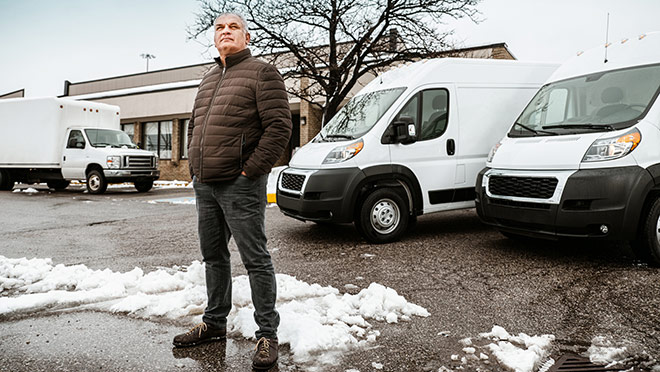Incentives to help B.C. fleet owners shift to electric vehicles

Help now available for EV fleet planning and electrical infrastructure
Now that there are incentives in place to help B.C. companies, schools, and government organizations start switching their medium and heavy fleet vehicles to electric, expect electricians and engineers with EV know-how to be very much in the mix.
The EV fleet incentives include:
- EV Ready fleet plan incentive, including fleet assessment and identification of charging and electrical infrastructure requirements, of up to $10,000 for fleets of fewer than 150 medium- or heavy-duty vehicles, and up to $15,000 for fleets of 150-plus. Eligibility is limited to operations with at least 20 medium- and/or heavy-duty fleet vehicles, and the plan must design for a minimum of six EVs to be incorporated into their fleet.
- Electrical infrastructure incentive covering up to 50% of infrastructure costs, not including charging equipment, to implement the electrical infrastructure in accordance with a customer's EV Ready fleet plan.
- A pilot project incentive, which provides funding for short-term fleet evaluation projects to assess the technology. Funding is based on an evaluation of the scope of the work, projected benefits and value proposition, and the associated costs of testing.
A fourth incentive was also announced in June, but is focused less on EV charging and more on supplying clean energy to the film industry. The Kiosk Power Solutions incentive provides funding of up to 50% of infrastructure costs for the installation of permanent power kiosks configured for filming applications. They are to be installed by municipalities to offset the use of diesel generators.
Fleet planning and infrastructure incentives go hand-in-hand
BC Hydro program manager Reid Arkinstall emphasizes that an EV Ready fleet plan has to include concrete plans for a switch to at least six electric vehicles, and that the electrical infrastructure incentive is the next step to getting that done.
"We don't want customers to just create a plan," he says. "We want to support customers to actually go ahead and retrofit their existing facilities. That's why we're providing funding for electrical infrastructure upgrades, for up to 50% of customer costs. The planning and infrastructure incentives are the meat and potatoes of the program."
The programs were launched to help fill a gap in understanding around the business case for switching fleets to EVs. Strategic planning will include everything from which vehicles are a good fit, and are available, for this transition, as well as a deep dive examination of power needs, charging options, and electrical infrastructure upgrades. Ultimately, offering incentives to offset the costs of such investigations is key to overcoming the reticence of companies to make the switch.
Incentive for pilot projects lets you assess EV fleet technology
Technologies around fleet charging, and the vehicles themselves, are changing fast. Arkinstall says the pilot project incentive is designed to enable a "sandbox" experiment in fleet charging.
"This is very new for a lot of companies, especially when we're talking about medium- or heavy-duty vehicles," says Arkinstall. "So we've set up funding to allow them to basically carry out a pilot project so they can test how their operations interact with an electric vehicle. The idea is to help them determine which vehicles make sense to transition to."
BC Hydro will assess companies interested in such pilot projects against a set of criteria aimed at defining the operation's viability of a switch to electric fleet vehicles. Funding amounts are based on an evaluation of the scope of work, the projected benefits and value proposition, and the associated costs for the testing.